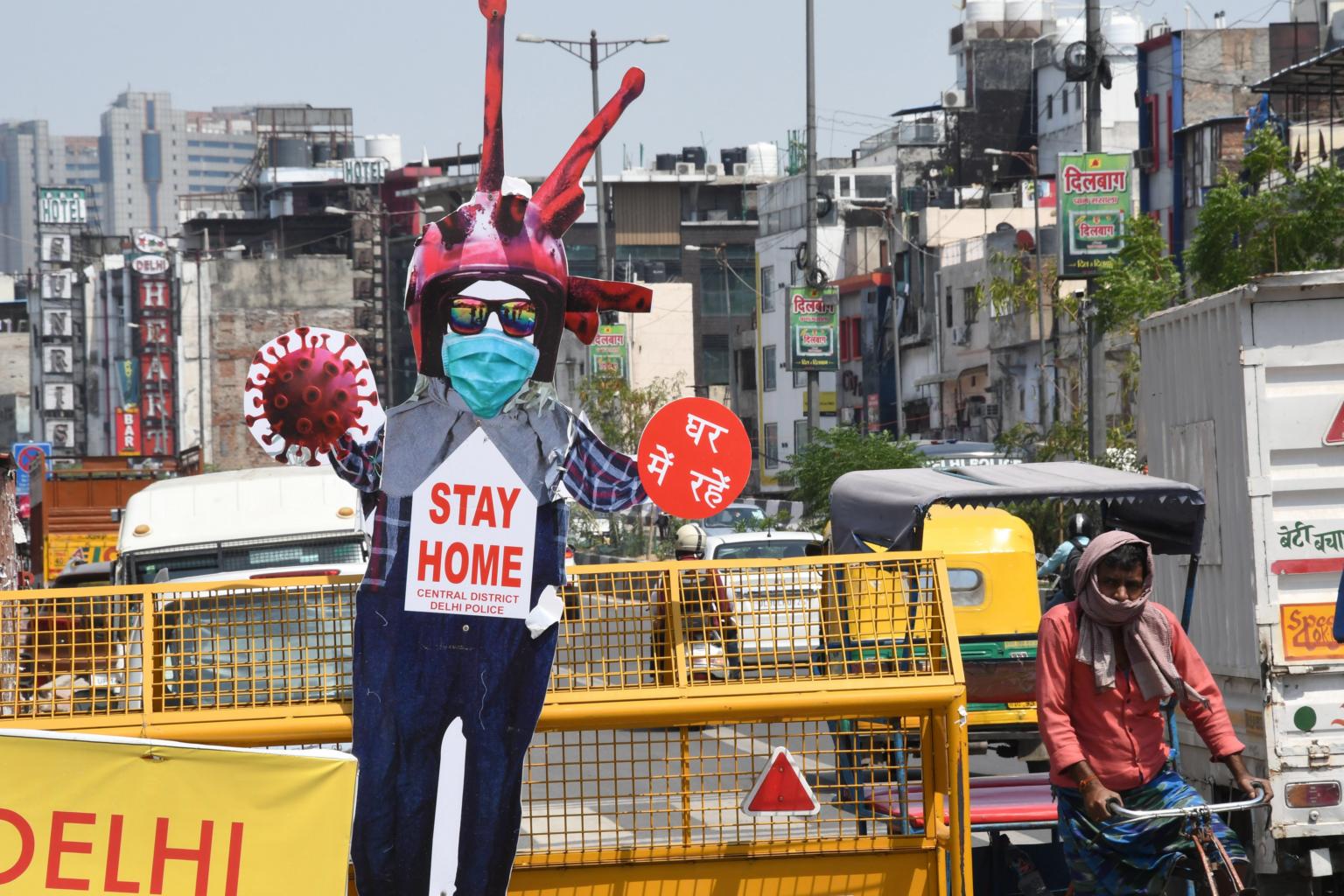India surpasses China in coronavirus cases to become new Asia hot spot
Sign up now: Get insights on Asia's fast-moving developments

India saw 3,787 new infections on May 15, bringing its total to 86,508, surpassing China's 84,038 cases.
PHOTO: EPA-EFE
Follow topic:
NEW DELHI - India has now recorded more Covid-19 cases than China as it continues to lift some of its more stringent measures to contain the virus.
The world's second most populous country has reported 86,508 infections and 2,760 deaths. China has recorded 84,038 cases and 4,637 deaths.
Most of India's infection cases are registered in its top cities, which are hubs of economic activity, posing both public health and economic challenges.
Nearly a third of the country's cases were recorded in capital city Delhi, which has a population of 19 million, and Mumbai, the country's financial capital.
Mumbai, with its 22 million residents and 17512 Covid-19 cases, has seen its health infrastructure coming under pressure amid a growth in coronavirus infections.
Hospitals are overwhelmed, an estimated 487 police personnel have tested positive for Covid-19 and the virus has continued to spread through its slums, which remain a key worry for India's policy makers.
At Dharavi, Asia's largest slum, 84 new cases were recorded on Friday, taking the total tally in the slum to 1145 with 54 fatalities.
Delhi has 8995 confirmed cases.
Its neighbouring states of Uttar Pradesh and Haryana have sealed their borders, allowing movement only for essential services.
Experts say that getting the economy back on track fast will depend on getting the virus under control in its top cities.
Other cities recording high numbers of infections include Chennai and Ahmedabad with 5946 and 7171 cases respectively on Friday.
"It is becoming increasingly clear that Covid-19 will not disappear immediately, the economy will need to be managed alongside persistent infection risks, possibly for a prolonged period," said Mr Rishi Sahai, managing director of financial advisory company Cogence Advisors.
He said that the 130 districts classified as red-zone districts at present are some of the most urbanised and industrialised parts of the country and account for 41 per cent of national economic activity and 38 per cent of India's industrial output.
"Finding methods of keeping these red-zone districts operational and safe would be critical in keeping economic activity sustainable," he said.
India implemented complete lockdown on March 25, which brought all economic activity to a halt.
Prime Minister Narendra Modi has been easing restrictions in phases allowing economic activity to resume, shops to reopen, offices to resume operations with 33 per cent of their workforce and people to come out of their homes between 7 am and 7 pm.
Mr Modi has now promised that there would be new rules in the next phase of the lockdown whose more stringent restrictions will be lifted on Sunday.
The country has been divided into red, orange and green zones, with e-commerce for non essential items barred in red zones.
India has continued to see a rise in new infections. But according to the government, the rate of new infections nationwide is slowing down.
India's doubling rate of the virus has slowed down from 10.9 days in the past week to 13.9 days in the three days till Thursday, said health minister Harsh Vardhan on Thursday.
Enforcing social distancing amid lifting some restrictions remains challenging in the cities, which are overcrowded.
Still, there is a difference of opinion among India's states on how to move forward.
The Delhi government is keen to open up the capital city and resume all economic activities, while others like the Telangana government has already announced the lockdown in the state will continue until May 29.
"We think that after relaxing the lockdown, there will be an increase in coronavirus cases," wrote Delhi chief minister Arvind Kejriwal in a letter to Mr Modi.
"But we have arranged hospitals, oxygen, ventilators, ambulances and ICUs to tackle the situation."

